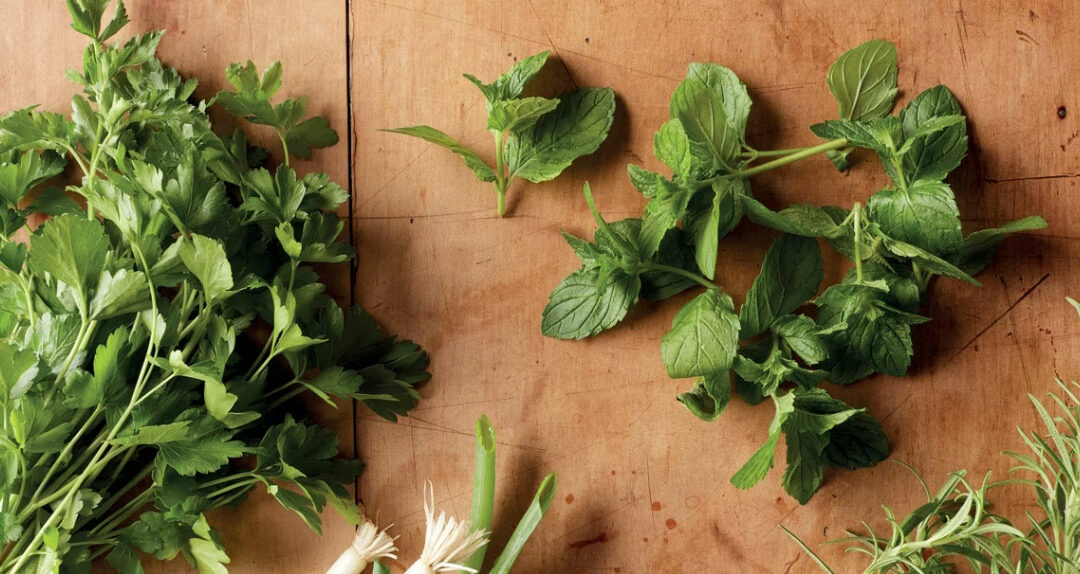When it comes to everyday ailments, Mother Nature is often the supreme healer.
Just as the right accessory transforms a plain outfit into something special, the right herb takes an ordinary meal and turns it into a culinary experience. You probably already appreciate the zest and flavor of homegrown favorites like dill, sweet basil and rosemary. As the warm days of spring creep into summer, it’s the perfect time to expand your herbal horizons and try something new in your garden.
The following five herbs have something special: a bit of extra, unexpected flavor that comes straight from Mother Nature. They’ll add depth to your cooking and all are easy to grow. Just tuck them into a pretty container or among your flowerbeds, and keep them moist, not soggy. All prefer full sun, but if you live in an area with intense summer heat, afternoon shade and an occasional misting will be appreciated. Fresh-picked herbs are best when used right away, but if you have extra, store them in the humidity-controlled Electrolux Perfect Temp Drawer, where they will stay tasty and crisp for two or three days.
Cinnamon basil: Not only does cinnamon basil have a strong flavor and scent of cinnamon, but this cultivar of sweet basil also adds a touch of beauty to your garden, with purple-veined leaves and stalks of deep purple flowers. It’s easy to grow, as well. But its real beauty comes into play in the kitchen. Use this fragrant herb to spice up fruit salad, Asian or Mediterranean dishes or in these delicately delicious lime cinnamon basil cookies, sure to be a hit with family and guests alike. Not a fan of cinnamon? Pineapple basil is an exotic alternative.
Chocolate mint: This is a variety of mint with brown-tinted stems and leaves, and the delectable flavor and aroma of a peppermint patty candy. Rub your fingers on its leaves and give them a smell, and you wouldn’t believe you don’t have candy in your hand. Like all mints, it’s very invasive in the garden, so corral it in a container placed to receive afternoon shade. Use the leaves to garnish ice cream, brownies or other sweet treats — or go adult with a sprig of chocolate mint in your mojitos. For a wonderfully refreshing cup of tea, pour boiling water over the fresh leaves, and let the tea steep for ten minutes.
Lemon thyme: Add a dash of lemon to the earthy flavor of thyme, and you have lemon thyme – a wonderful addition not only to chicken, pork or fish dishes (use it in place of common thyme for extra citrusy flavor), but also useful in desserts like this lemon thyme pound cake. As a bonus, the plant has cheerful, bright green and yellow leaves, and when paired in a container filled with yellow annual flowers like snapdragons, pansies, marigolds or celosia, you get the best of both worlds.
Pineapple sage: The gorgeous red flowers light up your garden through the fall, attract hummingbirds and butterflies, and as if that isn’t enough, they are edible! Add a few of the bright red blooms to vegetable or fruit salads for that certain something extra. Pineapple sage’s uses don’t stop there, however – the leaves smell and taste like pineapple, and add sweet zip to cocktails, lemonade, fruit salad and ice cream. Or try this pan-seared cod with pineapple sage pesto at your next dinner party.
Anise hyssop: Hardy, drought-tolerant anise hyssop punctuates your flower garden with pointed stalks of purple flowers that draw hummingbirds and bees in droves. The flowers are pretty, but it’s the leaves that add beauty to your kitchen – just cut or rub the leaves to release the licorice-like aroma and flavor. Pour boiling water over a sprig or two for a soothing cup of hot tea, or spice up lemonade and cocktails with this fragrant herb. If you are looking for something entirely new to serve guests, look no further than this recipe for roasted chicken with anise hyssop, peaches and hazelnuts.

